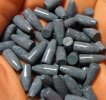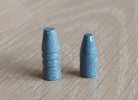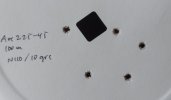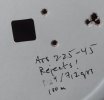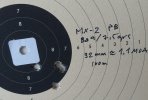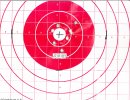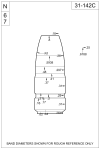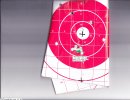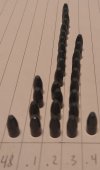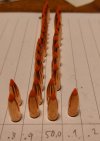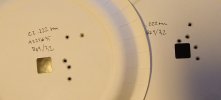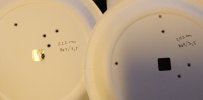Spindrift
Well-Known Member
Many interesting points to ponder, thank you all for your contributions!
I haven't been able to find a thorough test of slick PC bullets anywhere, only way to find out is to give them a shot- literarily. I'll keep you posted.
I have, however, shot a fair bit with the Arsenal .30- cal HVTH1 bullet. This is quite close to a slick GC bullet. Only a minimal groove, with a long, unrelieved bearing surface. It is an excellent, adaptive design that seems to shoot well in anything. This was the bullet that insired me to test an actual slick.
I haven't been able to find a thorough test of slick PC bullets anywhere, only way to find out is to give them a shot- literarily. I'll keep you posted.
I have, however, shot a fair bit with the Arsenal .30- cal HVTH1 bullet. This is quite close to a slick GC bullet. Only a minimal groove, with a long, unrelieved bearing surface. It is an excellent, adaptive design that seems to shoot well in anything. This was the bullet that insired me to test an actual slick.


